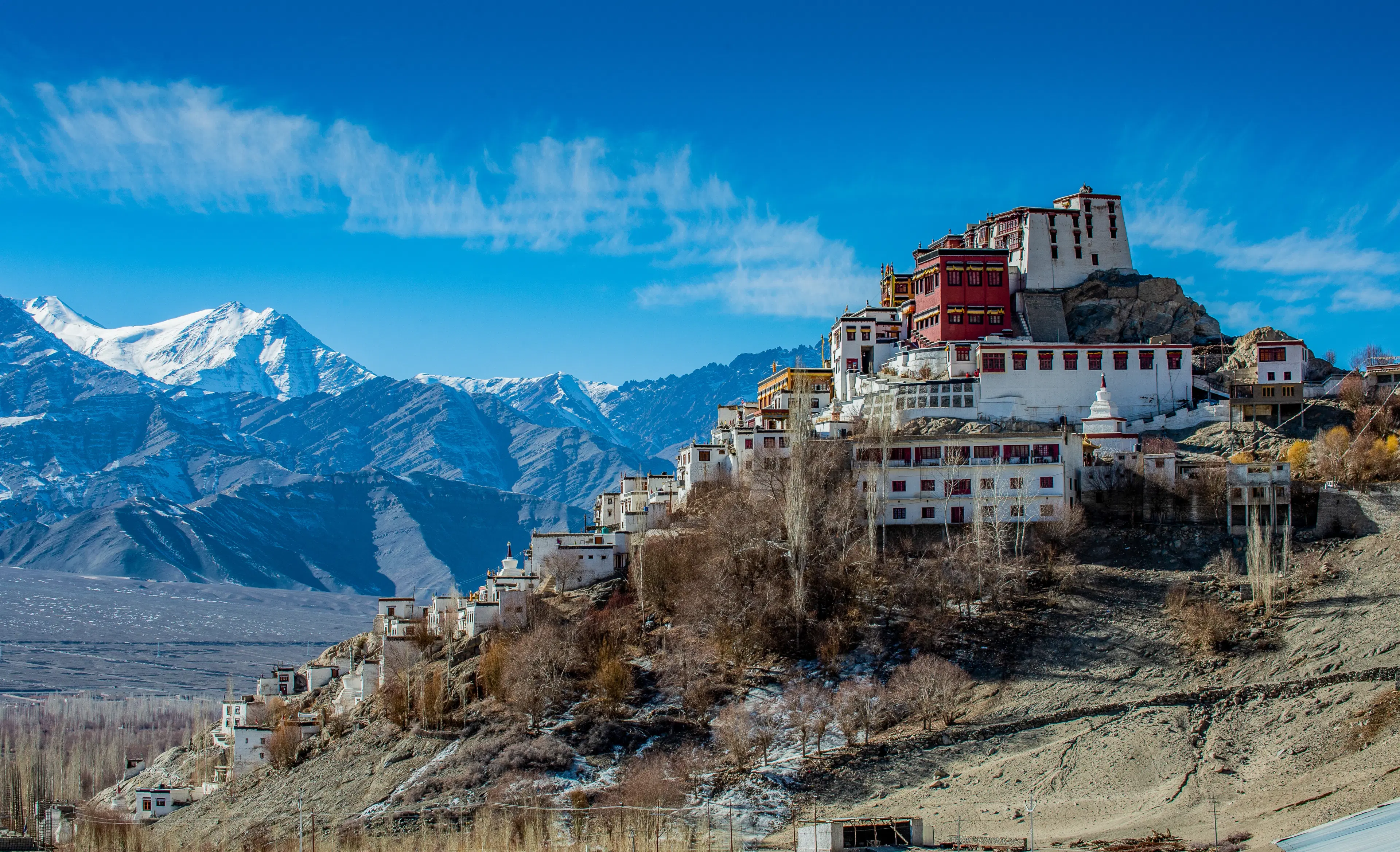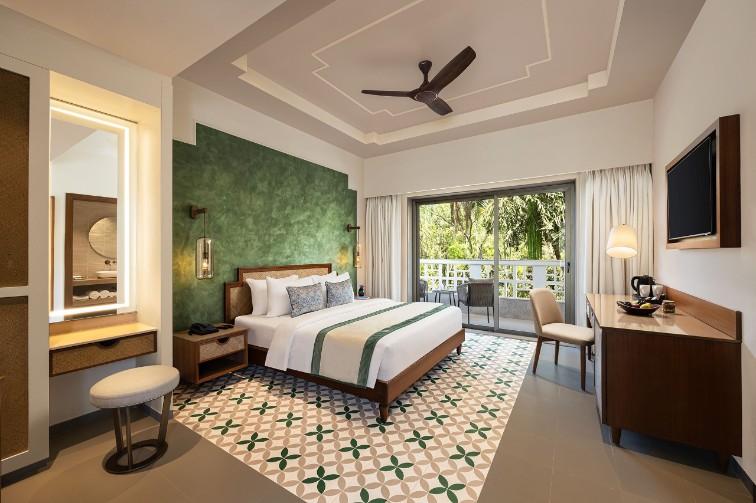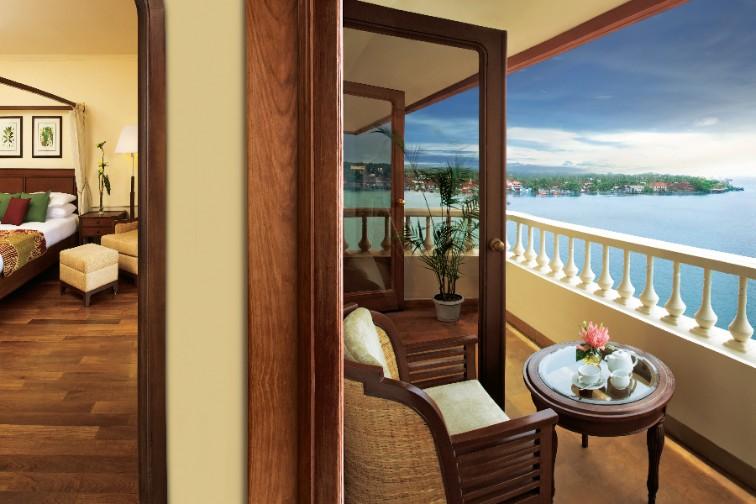
Hotels
•05 min read

Leh has long fascinated travelers with its mystic landscapes, ancient culture, and adventurous spirit. Nestled amidst rugged terrains and towering mountains, Leh offers a treasure trove of experiences for every kind of traveler. This guide will help you decide what is the best time to visit Leh by taking you through detailed seasonal insights, Leh travel tips, and accommodation recommendations. Whether you are planning to explore monasteries, trek through high-altitude trails, or simply savor the quiet beauty of nature, understanding Leh's weather patterns is key to crafting a memorable trip.
Leh's unique weather is shaped by its high-altitude desert climate. Imagine a place where the sky is a constant canvas of brilliant blue during clear days, and the temperature oscillates between pleasantly mild and unexpectedly chilly. Winters can see heavy snowfall while summers are dominated by clear, sunny skies. Travelers need to pay attention to these dramatic shifts, as they significantly impact accessibility, sightseeing, and overall travel plans.
Understanding local weather is crucial for a stress-free trip. Leh's weather not only dictates which landscape you'll be able to explore but also affects the accessibility of its mountain roads and hidden trails. For instance, early summer is ideal for trekking and mountain biking, while winter offers the allure of frozen lakes and snow-covered peaks. These nuances help define the ideal months for a Leh trip as per your particular interests and comfort.
Summer is widely regarded as the peak tourist season in Leh. With comfortable daytime temperatures and cool nights, this season is perfect for outdoor adventures. Trekking trails, exploring ancient monasteries, and engaging in local festivals are some activities that come alive during summer. Leh's weather guide for this season brings temperatures that make it pleasant to be outdoors while ensuring that the clear skies provide a window to the majestic Himalayan scenery.
Although the monsoon is not typically associated with Leh, these months offer a distinct charm for those looking for solitude. Fewer tourists, mist-covered valleys, and a tranquil ambiance define this period. However, be prepared for occasional roadblocks due to landslides or heavy rains. The monsoon comes with its set of trade-offs: less crowd and a peaceful retreat in exchange for unpredictable weather conditions.
Autumn in Leh is a true hidden gem, especially for nature lovers and photography enthusiasts. The season offers clear skies that add a surreal clarity to the scenery, making every photo a masterpiece. Vibrant landscapes, coupled with moderate temperatures, set the stage for a comfortable yet breathtaking holiday. Autumn is considered by many to be the best season to capture the night sky, as the crisp air amplifies the view of the stars and the Milky Way.

Winter transforms Leh into a winter wonderland with its blanket of snow and sparkling ice formations. If you dream of witnessing frozen lakes and snow-capped mountains, winter is the season for you. Even though the cold is intense, Leh travel tips for winter travelers suggest packing warm clothing, thermal wear, and other essentials to make the most of this crisp season. Winter also offers the chance to experience serene landscapes without the typical hustle and bustle of regular tourist seasons.
Spring marks the transition from cold to mild, where the landscape begins to burst into life as snow starts to melt away. This shoulder season is perfect for those who prefer enjoying Leh with fewer crowds but without compromising on weather conditions. With blooming flowers and a gradual return of warm days, spring provides a balanced experience that caters to both adventure enthusiasts and leisure seekers alike.
The peak tourist season in Leh comes packed with festivals, cultural events, and a broad array of activities. This is the time when local hotels and restaurants are fully operational, offering a host of amenities and services. Travelers can easily book accommodations based on their preferences, whether looking for luxury or a budget-friendly stay. Additionally, during the peak season, you have the benefit of well-organized tours and high accessibility to key attractions.
On the flip side, off-season travel invites you to experience a more budget-friendly and tranquil side of Leh. With fewer tourists, you enjoy a more intimate encounter with nature and local culture. The cost of accommodation and travel during off-peak periods can be significantly lower. Always remember to check road conditions in case of unexpected weather changes, and consider booking your accommodations well in advance to avoid any inconvenience.
The question of how many days one should spend in Leh can be answered by considering the goals of your journey and the season of travel. A minimum of 5-7 days is advisable, which allows sufficient time to acclimatize to the high altitude, visit key attractions like monasteries and lakes, and explore local markets. Whether you are planning a short getaway or an extended adventure, consider your interests and the nature of your planned activities.
Leh offers a diverse range of accommodation options. Whether you prefer staying in luxury hotels that offer panoramic Himalayan views or cozy guesthouses that provide a more personal touch, there is something for everyone. For those traveling during peak seasons, advanced booking is a must to secure your choice of lodging. Meanwhile, budget-conscious travelers might benefit from off-season deals that feature among the top Leh hotel recommendations.

Preparing for a trip to Leh requires careful planning—especially in what you pack. For summer, lightweight clothing along with a warm jacket for the evenings is ideal. Monsoon travelers should be prepared with waterproof clothing and sturdy footwear, whereas winter visitors must pack thermal wear, insulated boots, and adequate cold-weather accessories. Spring travelers should consider layering options as the temperature can vary significantly during the day.
Pro Tip for Your Leh Adventure
Did you know? The best time to visit Leh for clear skies and stargazing is during autumn (September to October), when the weather is crisp, and the Milky Way is often visible to the naked eye.
The best month to visit Leh Ladakh depends on your travel preferences. For pleasant weather and open roads, June to September is ideal. To experience snowfall, visit in December or January.
Ladakh is accessible year-round. However, road travel is advisable from May to October when mountain passes are clear and accessible.
A minimum of 5-7 days is recommended to acclimatize, explore the main attractions, and absorb the local culture.
Snowfall in Leh typically occurs from November to February, with January being the peak month for witnessing a winter wonderland.
The optimal time for a road trip to Leh Ladakh is from June to September, when the passes like Rohtang and Baralacha La are free from snow and easily navigable.
In summary, selecting the best season to visit Leh hinges on your preferences, be it the vibrancy of summer adventures, the serene solitude of the monsoons, the picture-perfect charm of autumn, or the pristine winters and rejuvenating springs. By aligning your travel itinerary with the seasonal patterns, you ensure a smoother, more enriching journey. With proper planning, including understanding key weather patterns, choosing the right accommodations, and packing wisely, you can fully enjoy all that Leh has to offer. This guide aims to empower your travel planning, making your Leh holiday both unforgettable and well-prepared.